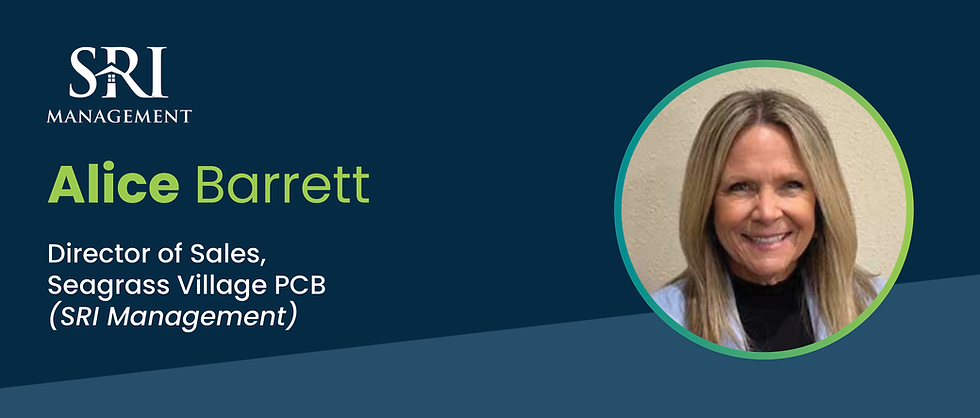Sales Tip of the Month: Key Measures of Sales Success
- WelcomeHome

- Jul 7, 2021
- 2 min read

Whether you’re just starting out in a sales position in senior living sales, or you’re a seasoned professional with years of success under your belt, it never hurts to have a refresher of the sales goals that your company may have in place to measure your activity and success.
Measurements of sales performance can be quantitative or qualitative. In senior living sales, quantitative measurements measure a number of times an activity happens, like outbound inquiry calls made or tours held. Quantitative measurements can be seen in the reporting available in the senior living CRM. Qualitative measurements measure the quality of an activity, like if the sales professional seemed to be genuinely interested and concerned on the call with a prospect. Qualitative measurements can be done when reviewing recorded phone and zoom calls.

Here’s a rundown of the most common quantitative goals in senior living sales and why they’re important. The Goal:Why It’s Important:Activity GoalsNumber of new leadsIf a sales system is like a funnel or a pipeline, then the number of new leads going into the top of the funnel needs to be great enough to get the desired result at the bottom: a certain number of move-ins each month.Number of outbound inquiry calls madeCalls made to prospects move the sales cycle forward by establishing next steps like setting up an appointment to tour.Number of professional referrals receivedProfessionals like physicians, clergy, and attorneys are excellent sources of leads, so counting the number of referrals received from them indicates that you have a healthy referral source network. Number of events held and attendanceHolding an event is a great way to get people like prospects, their family members, and referral sources into your senior living community to meet the staff and residents and experience community life firsthand. Number of professional outreach appointmentsAs mentioned above, certain professionals are excellent sources of leads to senior living, so cultivating your relationships with them is key to maintaining the flow of referrals.Number of toursA prospect that comes in for a tour is most likely very seriously considering your community. The number of tours is an important measurement between the number of inquiries and the number of deposits, and shows how effective a salesperson is at moving a prospect along in the sales process.Number of deposits receivedPutting down a deposit is the next step after the tour in the sales process, and is one step closer to the prospect moving into the community.Number of move-insA move-in is the culmination of the hard work the salesperson put in to move the prospect through the sales cycle.Number on waitlistIf the community is at 100% occupancy, or if a particular unit type is fully leased, then the prospect can opt to be put on a waitlist for the next available unit or a unit they desire. A healthy waitlist ensures that a fully occupied community has few or no lost revenue days when residents move out.Performance GoalsSpeed-to-Lead RatioThe Speed-to-Lead Ratio measures how quickly a sales professional reaches out when a lead is received.
Inquiry-to-Tour RatioThe Inquiry-to-Tour Ratio measures the number of tours generated by the inquiries received. For example, if 10 inquiries are received and 5 come in for a tour, the ratio would be 50%. 50% is a common benchmark for this ratio.Tour-to-Deposit RatioThe Tour-to-Deposit Ratio measures the number of deposits received as a result of the tours conducted. For example, if 10 tours are held and 3 decide to put down a deposit, the ratio would be 30%. 25% is a common benchmark for this ratio.Tour-to-Waitlist RatioThe Tour-to-Waitlist Ratio measures the number of requests to be added to the waitlist as a result of the tours conducted if the community is either fully occupied or the desired unit type is unavailable. Because being added to a waitlist for an unknown amount of time is less desirable than a definite move-in date, the benchmark for this ratio is usually lower than Tour-to-Deposit.Tour-to-Move-In RatioThe Tour-to-Move-In Ratio measures the number of residents that move in as a result of the tours conducted. 25% is a common benchmark for this ratio. This ratio is measured to observe if a significant number of depositors change their mind before moving in.Deposit-to-Move-In RatioThe Deposit-to-Move-In Ratio measures the number of residents that move in after they have made a deposit. 25% is a common benchmark for this ratio. This ratio also is meant to observe if depositors change their mind before moving in.
Where there’s activity, there’s success. Keeping track of your progress toward your goals is effortless by logging your activity in your senior living CRM. It also makes reporting your goals easy!



